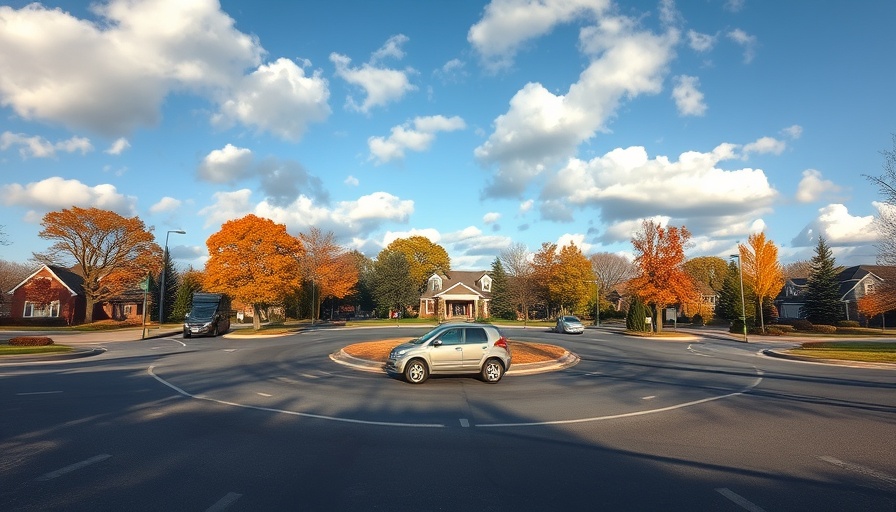
Understanding the Roundabout Effect on Roadway Safety
Roundabouts have emerged as a favored design among traffic engineers due to their ability to enhance vehicle flow and safety. However, recent studies reveal a troubling trend regarding non-motorized roadway users, such as pedestrians and cyclists, particularly at roundabout exits. Research conducted by the Minnesota Department of Transportation and partners found that while nearly 80% of drivers yield to these users at roundabout entries, this drops dramatically to only 40% at exits.
The Dangers of Roundabout Exits
Drivers often leave roundabouts at higher speeds, frequently accelerating as they exit, which contributes to the reduced yielding rate. This phenomenon is partly attributed to driver misunderstanding about yielding requirements at exits, where visibility and road design can complicate the situation. In environments characterized by higher vehicle speeds and more complex layouts, such as multiple-lane roundabouts, these challenges escalate dramatically.
Visibility and Awareness: Key Safety Factors
The study highlights that smaller, single-lane roundabouts tend to yield higher compliance rates from drivers, primarily because they create environments conducive to lower speeds. Factors such as improved pedestrian visibility, like median islands and marked crossings, can also increase yielding rates. Conversely, the presence of non-visible pedestrians or unclear signage undermines the safety of both pedestrians and cyclists, leading to alarming outcomes.
The Importance of Effective Design
To address these vulnerabilities, expertise from past studies emphasizes the importance of intentional roundabout design. Roundabouts must be constructed with the needs of all road users in mind. For example, successful roundabouts often incorporate features such as rectangular rapid flashing beacons (RRFBs) and strategically planned pedestrian crossings. These elements significantly enhance the visibility of non-motorized users, ensuring safer interactions.
Lessons from Other Regions
Various regions, particularly in Michigan, provide compelling studies on the mixed results for pedestrian and cyclist safety at roundabouts. Locations that have effectively integrated 'Complete Streets' legislation to consider all user needs have demonstrated an improvement in safety outcomes. The experience of a downtown Brighton roundabout, which boasts features designed for multimodal traffic, exemplifies successful implementation, showcasing that well-engineered roundabouts can cater to diverse roadway users effectively.
Strategies Moving Forward
As we move forward, it is imperative to continue research and development focusing on redefining and enriching roundabout safety standards. Future proposals should explore advanced signage systems and innovative traffic control measures to better protect pedestrians and cyclists. Creating environments that increase awareness and force drivers to slow down can prevent accidents and save lives.
Concluding Thoughts
Roundabouts can serve as essential traffic management tools when designed responsibly. Incorporating insights from ongoing safety research will be key for communities looking to enhance their roadway safety records. By prioritizing the protection of all users, we can foster a safer transport environment for everyone.
Take action by advocating for improved roundabout designs in your area that prioritize the safety of all roadway users. Engage with your local transportation agency and lend your voice to support initiatives that enhance pedestrian and cyclist safety at roundabouts.
 Add Row
Add Row  Add
Add 




Write A Comment